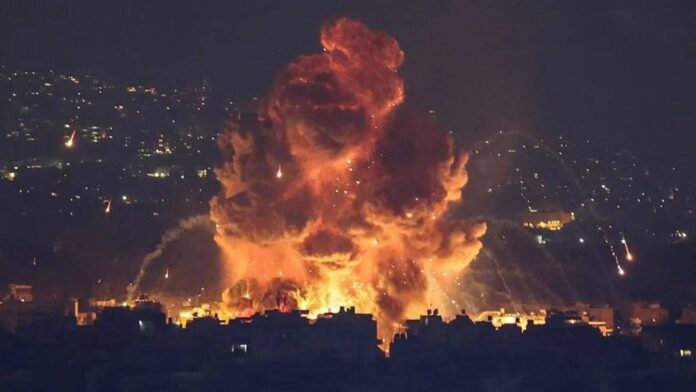The illusion of calm between Kabul and Islamabad has shattered once again. A deadly Pakistani strike in Afghanistan left ten civilians dead, including nine children, in an operation officially framed as a retaliation, but which in substance resembles a brutal projection of domestic failures onto foreign soil.
The So-Called Truce: A Diplomatic Mirage
In the early hours of November 25th, Pakistani forces bombed several locations across Afghanistan’s eastern border provinces, Khost, Kunar, and Paktika. The targets? Civilian homes. The toll? At least ten dead, including nine children (five boys, four girls) and one woman, according to Taliban spokesperson Zabihullah Mujahid.
This latest Pakistani strike in Afghanistan came just hours after a suicide attack targeted a Pakistani security headquarters in a neighboring border province. No group has claimed responsibility. But predictably, Prime Minister Shehbaz Sharif vowed retribution and framed the operation as a response to “terrorism,” with state broadcaster PTV swiftly pointing fingers at “Afghan nationals.”
What is unfolding, in reality, is not counterterrorism, it’s state theater, a violent pantomime that conceals a deeper inability to control restive tribal regions and their increasingly aggressive Islamist factions.
Retaliation or Deflection?
Islamabad’s narrative, of righteous retaliation against “foreign terrorists”—rings increasingly hollow. The bombings targeted civilian homes at midnight. There was no military objective visible, no clear link to any insurgent cell. The symbolism of these raids outweighs any strategic gain: Islamabad wants to be seen as strong, decisive, and unafraid to cross sovereign lines to restore “order.”
But this kind of coercive bravado has long been a default tool in Pakistan’s geopolitical playbook. Since the Musharraf years, the army has blurred the lines between internal security and external aggression, using Afghanistan as both staging ground and scapegoat for its own festering chaos.
Cross-Border Terrorism: The Two-Way Mirror
Since the Taliban’s return to power in 2021, Islamabad has struggled to contain a resurgence of the Tehrik-i-Taliban Pakistan (TTP), the ideological cousin of the Kabul regime. On November 11, a deadly bombing outside an Islamabad courthouse killed twelve people and wounded dozens. The TTP claimed responsibility.
Rather than admit the rot within, Pakistan reflexively blamed “Afghan-based leadership” for directing the attack, an accusation that ignores years of duplicity. Islamabad’s security apparatus has, for decades, allowed jihadist factions to flourish under its watch, using them as pawns in broader strategic games against India and the West.
In this light, the November airstrikes are less a response to a real threat than a ritual of evasion, a way to export instability rather than confront it domestically.
2,600 Kilometers of Frozen Conflict
Since October 12, the 2,600-kilometer border between the two countries has been sealed. Trade is paralyzed, and diplomatic ties hang by a thread. In October, heavy clashes left 70 people dead. Subsequent “peace talks,” mediated by Qatar and Turkey, failed to yield a framework for de-escalation. The term “truce” has become little more than a fig leaf.
Pakistan continues to accuse Kabul of harboring terrorist groups—chief among them the TTP—while the Taliban regime counters that Pakistan itself harbors armed factions hostile to their government. Both sides are pointing fingers in a hall of mirrors, unwilling or unable to control the monsters they once helped create.
The result: a creeping, stateless war, where the cost is paid in blood by civilians on both sides.
A Regional Powder Keg
The latest Pakistani strike in Afghanistan is more than a cross-border flare-up. It is a stark warning that the region’s fragile balance is rapidly deteriorating. The Pakistani state, cornered by internal dissent and economic decay, lashes out—not to solve its problems, but to mask them. Kabul, diplomatically isolated and economically strangled, has little leverage to retaliate or defend its narrative.
And as usual, the West remains silent. Washington’s reaction? None. The Anglo-American axis, ever strategic in its outrage, has yet to blink, because their interests, for now, remain untouched.
But for how long?



